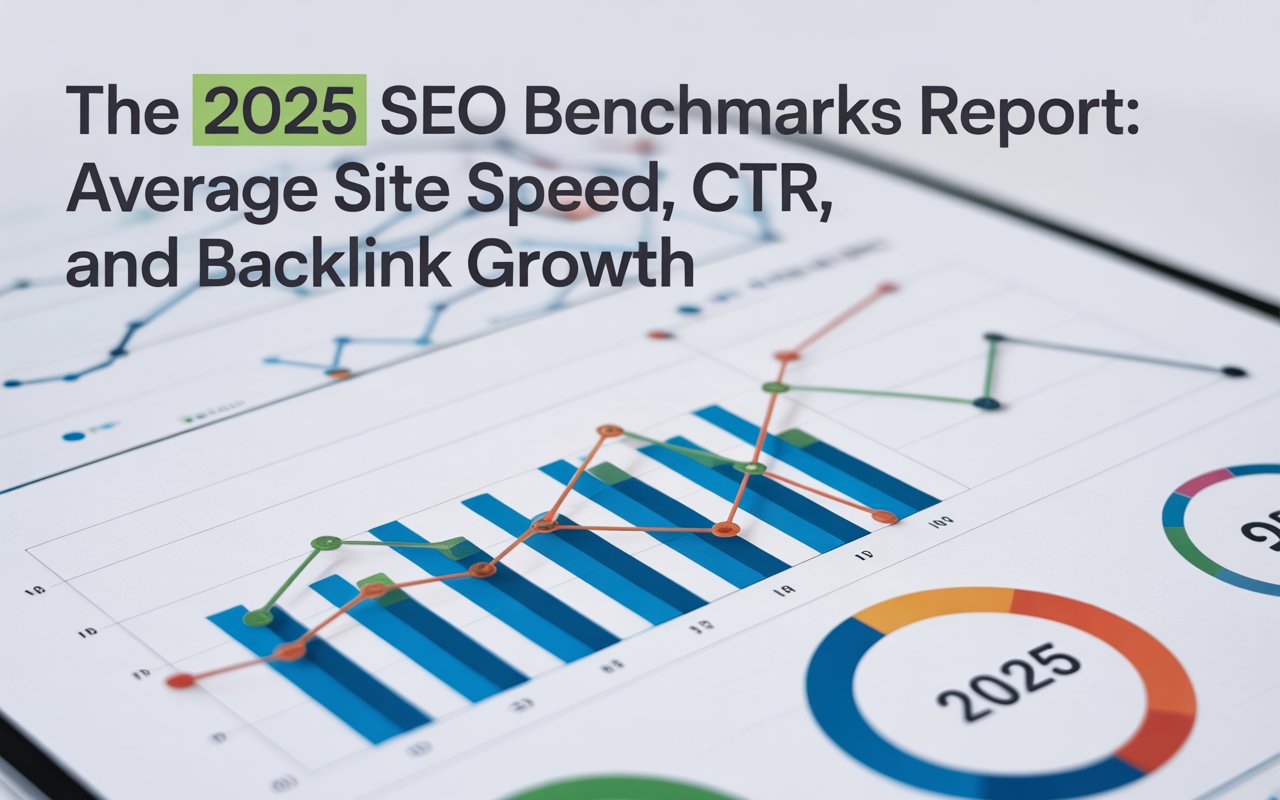
To unlock growth and achieve true synergy, it's essential to understand how SEO and SEM work together.
So, let's dive right in!
What is SEO and How SEO Works?
Search engine optimization, or SEO, is the practice of improving a website to make it more visible in organic search engine results. SEO involves optimizing the website's content and design to make it more attractive to search engines.
Google, Bing, and other search engines use bots to crawl pages on the web, collecting information about those pages and putting them in an index.
Algorithms analyze pages in the index, taking into account hundreds of ranking factors, to determine the order pages should appear in the search results for a given query.
In summary, SEO is a method of crafting and presenting your content so that it is appealing to search engines and ranks high in organic, non-paid search results.
✨ See: 5 Ways of How to Monitor Organic Rank
What is SEM and How SEM Works?
Search engine marketing, or SEM, is a broader term than SEO. SEM is a digital marketing strategy used to increase a website's visibility in search engine results pages (SERPs) through paid advertising strategies.
SEM functions through paid advertisements which appear on search engine results pages (example: Google AdWords or Bing Ads).
Advertisers bid on keywords that users of services might type in the search bar when looking for certain products or services. This grants the advertiser the opportunity for their ads to appear alongside results for those search queries.
SEO might be a component of an SEM campaign, but SEM goes beyond SEO by adding paid advertising strategies into the fold.
✨Check your SERP ranking
SEO vs. SEM: Understanding Their Relationship

If you're interested in driving traffic to your website, you'll have to familiarize yourself with both SEO and SEM. By utilizing both, you'll create a balanced, effective online presence that engages and converts potential customers seamlessly.
Yet, to use SEO and SEM to its fullest potential, it's crucial to understand their unique differences and similarities.
What are the Differences Between SEO and SEM?
There are notable differences between SEO and SEM, and grasping these differences will determine what strategies to implement for your business' growth.
Investment: SEO is an organic method of improving website visibility. This means it uses non-paid strategies to optimize a website and yield high rankings over time. Conversely, SEM requires a monetary investment. SEM involves purchasing advertising space on SERPs and can yield immediate high visibility.
Duration: Patience is key with SEO, it takes time to see the results of SEO efforts, but it provides long-term benefits once your site starts ranking high on search results. SEM on the other hand offers immediate results, but your visibility will last as long as your budget allows.
Strategies: SEO strategies include on-page optimization, such as keyword integration, quality content, and meta-tag updates. It also incorporates off-page optimization like link building and social sharing. SEM, however, mainly revolves around paid advertising, like pay-per-click (PPC) marketing.
Goal: Both SEO and SEM work towards improving visibility in search engine results. However, while SEO focuses on ranking higher in organic search results to get free website traffic, SEM's primary goal is to gain visibility through paid advertising techniques.
✨You may want to read: Understanding On-Page and Off-Page SEO
🔎 Case Study
To better illustrate the differences, consider the following comparison. Let's say you have a website selling skincare products:
SEO Example: You optimize your website with relevant keywords, such as “organic skincare products,” “vegan face creams,” or “skincare products for sensitive skin” to rank high on SERPs.
You also use meta data and alt-tags effectively, ensuring your site is mobile-friendly and loading fast. Over time, these efforts result in your website appearing on the first page of organic search results when someone searches for these keywords.
SEM Example: You place a paid ad on Google for the keyword “organic skincare products”. When someone types in “organic skincare products” in the Google search bar, your ad appears at the top of the SERPs before the organic listings. This ad visibility is immediate but only lasts as long as you're paying for these keywords.

So, if fast results are on your agenda, SEM may be your best bet. If you're looking at building a sustainable, long-term web presence, SEO is the way to go.
However, it’s important to bear in mind that both SEO and SEM work better as complementary strategies rather than standalone ones.
How Do SEO and SEM Complement Each Other?
SEO and SEM are two sides of the same coin - one organic, one paid, yet united in a common goal of boosting your brand's digital presence.
Using a strategic mix of SEO and SEM can maximize visibility in SERPs, increase your website traffic, and improve your overall marketing ROI.
Here are some ways how SEO and SEM work together:
- Mutual Keyword Enhancement: Keywords are crucial in both SEO and SEM. SEO uses them to optimize content and perform better in organic ranking, while SEM incorporates them into ad campaigns to attract search engine users. By sharing keyword data between SEO and SEM, your brand can gain a synergy that improves the effectiveness of both strategies.
- Shared Insights: SEO and SEM each provide valuable metrics and insights. SEM campaigns provide immediate data on what's resonating with your target market, whereas SEO offers long-term insights into how users interact with your website. Sharing these insights allows us to refine both strategies to maximize your online presence.
- Balancing Costs and Visibility: The cost per click for SEM can be high for competitive keywords. A good SEO presence can help your brand rank organically for these terms, lowering reliance on expensive keywords. On the flip side, SEM can help secure excellent visibility immediately while your SEO strategy builds momentum.
✨Find keyword ideas.
So, Can SEO Work with SEM?
The answer is a resounding 'yes'!
SEO and SEM are not adversarial but complementary. They each offer benefits that the other lacks: SEO's sustainability and credibility combined with SEM's immediacy and reach.
SEO's Slow-and-Steady Approach
SEO helps your site achieve better organic rankings, but it isn't an overnight process. It's a strategy that builds credibility and authority over time, leading to sustainable organic traffic.
SEM's Immediate Impact
While SEO takes its time, SEM can immediately place your site on top of search results. It's beneficial, especially for new websites and businesses that need immediate visibility and traffic.
Better Together
When SEO starts paying off with better rankings and organic traffic, you don't have to stop using SEM. Instead, adjust your SEM strategy to focus on higher-value, competitive keywords that are more difficult to rank organically. Similarly, use the valuable keyword data from SEM to inform and refine your SEO optimization efforts.
🔎 Case Study
To visualize this, let us unveil a real-world example. An online store that sells high-end furniture started as an SEO-focused business. Asserting adaptable and localized keyword strategy, they gained good search engine rankings and steady organic traffic.
However, they realized certain competitive keywords were challenging to break into organically. The solution? An SEM campaign to buy ad spaces for these high-competitive phrases.
Suddenly, their furniture was displayed at the top of SERPs when users searched the highly competitive keywords. The immediate visibility from SEM brought in additional traffic and sales.
At the same time, their SEO work paid off and allowed them to rank organically for other strategic terms. Consequently, some budget from the SEM campaign was reallocated to more high-competitive keywords.
This example is an excellent case of using SEO and SEM in a complementary way to maximize visibility and ROI.
How to Maximize SEO and SEM Results

Navigating the landscape of SEO and SEM is all about staying proactive, informed, and adaptable. Here are some pro tips that can help you maximize your SEO and SEM results:
🎯 Balance is Key
Achieving the perfect balance between SEO and SEM is not a one-size-fits-all solution. Depending on your goals, budget, and market competition, the balance may tilt more in favor of one or another at different periods.
Monitor your campaigns closely and adjust your strategies as necessary.
🎯 Staying Updated
The world of search engines is constantly evolving. Keep abreast of the latest updates from search engines, and adjust your SEO and SEM strategies accordingly.
Google's algorithm changes frequently, and these changes can significantly impact your SEO and SEM performance.
🎯 Testing and Tweaking
The path to perfection is paved with a lot of testing and tweaking. Use testing tools like A/B tests to refine your SEM ad copies, images, and landing pages.
For SEO, regularly test different on-page SEO elements like meta descriptions, title tags, and headers for the best results.
✨Check website HTTP headers
🎯 Tracking Everything
Make data your best friend. Track every parameter, from click-through rate (CTR), bounce rate, and conversion rates for the website, to ROI for paid ads.
The more data you have, the more informed decisions you can make.
🎯 Keyword Research
For SEO, focus on finding the right long-tail keywords that have lower competition but hold the potential for high-quality, targeted traffic. Use keyword analysis tools like Google Keyword Planner or SEOmator and analyze which keywords your competitors are ranking for. Incorporate these keywords naturally into your quality content to aid in organic traffic growth.
In terms of SEM, short, popular keywords are often more effective. Single-word keywords tend to be highly competitive in most industries, so be ready to invest more for them. Like for SEO, keyword analysis tools will aid in your SEM keyword research. Additionally, analyze ad performance regularly and refine your keyword list.
✨You may also want to read: Branded vs. Non-Branded Keywords: Must Know Things
🎯 Quality Content
Just as SEO and content marketing go hand in hand, relevant, quality content matters greatly in your SEM strategies. A well-written ad that resonates with your audience can increase your CTR and lower your CPC.
🎯 Website Quality and Relevancy
Remember, the quality of your website and its relevance to your ad can drastically impact your Quality Score. In turn, this score affects where your ads are placed and how much you pay per click. Thus, maintaining a well-designed, user-friendly website that displays high relevancy to your ads is a must.
🔮 Future of SEO and SEM
Advancements in technology and changes in consumer behavior constantly transform SEO and SEM strategies.

- In the coming years, we can expect more emphasis on voice searches, mobile optimization, and the user experience (UX).
- Algorithm updates will continue to redefine what constitutes a high-quality, relevant website. For SEM, AI will play an increasing role, especially in keyword bidding and campaign performance prediction.
- Moreover, as search engines become smarter, they'll continue to prioritize delivering value to the user—meaning ethical, white-hat SEO strategies will be increasingly crucial.
- Similarly, SEM will continue to evolve, with PPC campaigns becoming more targeted and personalized to enhance user experience.
To stay ahead of the curve, understanding how SEO and SEM work in collaboration will be vital. Start implementing the tips and insights shared in this blog to establish a sound base and get ready to adapt your strategies as trends change.
Wrapping Up
It's time to move beyond SEO vs. SEM debate and embrace a collaborative approach.
SEO and SEM are not standalone strategies but an intertwined ecosystem. SEO and SEM are far more potent when they're aligned and working as a unit.
By understanding the synergistic power of how SEO and SEM work together, you can boost brand visibility, drive quality traffic, increase conversions, and enhance the overall ROI of your digital marketing efforts.
Stay connected for more actionable insights that can guide you on your path to success!
✨ Related Articles:
- Programmatic SEO: What Does It Mean & How to Do It?





